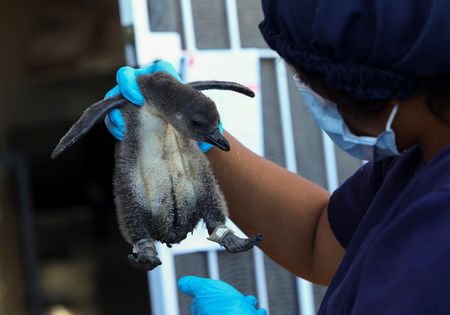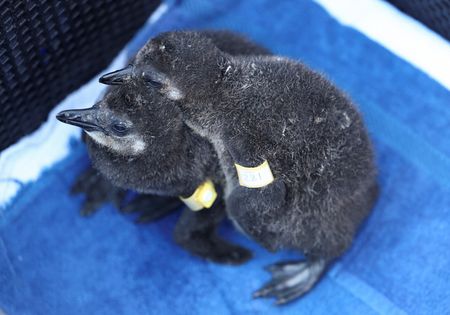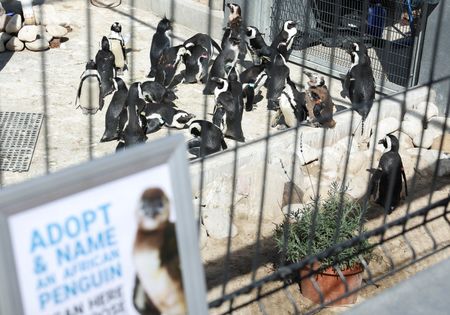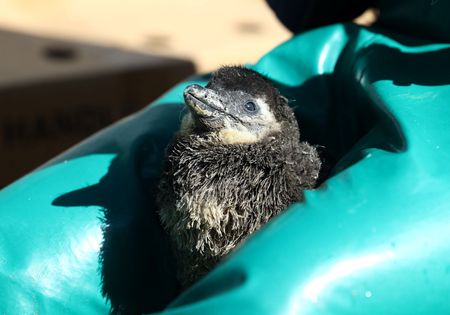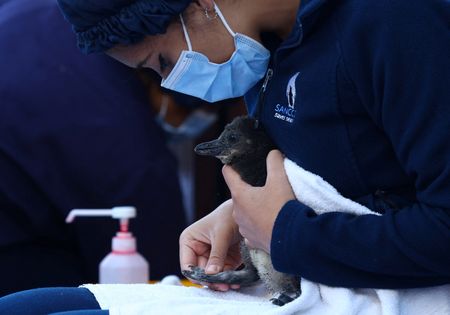By shafiek tassiem and Tim Cocks
CAPE TOWN (Reuters) – Bored of buying eggs made of chocolate and wrapped in foil with predictable bunny motifs? This Easter in South Africa you could instead spend your cash an egg that will hatch a live penguin.
But these ones are not for taking home.
Since the start of the year, a South African conservation group has been incubating over 200 eggs of the endangered African penguin that were previously rescued from two colonies.
The Southern African Foundation for the Conservation of Coastal Birds (SANCCOB) is soliciting donations to meet the cost of incubating them by inviting people to “adopt an egg.”
The African penguin — the only species that breeds on the continent, and which is also found in Namibia — was once South Africa’s most abundant seabird.
No longer. The population has plunged to less than 10,000 breeding pairs in 2024, according to SANCCOB resources manager, Ronnis Daniels, meaning there is only 1% left of the 1 million that were in existence a century earlier.
“At the current trajectory, which is an 8% loss every year, we are looking at extinction by 2035,” she told Reuters. “There won’t be enough (for) the wild population to save itself.”
Threats to the birds are legion, but the main culprit is commercial fishing, which has ravaged stocks of sardines and anchovies that the penguins depend on to live.
“That would be the top of the list,” Daniels said. “The sad part is that fish is exported mostly as fishmeal.”
Other threats include all the noise and pollution from the shipping routes around South Africa, especially when the ships stop to refuel in Algoa bay, she said.
On one day, volunteer Nicky Shadbolt was walking along an enclosure for the downy baby penguins.
“Over this time, when everybody is also thinking about chocolates and fluffy bunnies, we would like you … to adopt a penguin egg,” she said, punctuated by baby penguin squeaks.
“It is really expensive for us to raise that little penguin from egg or all the way to maturity,” she added, a process that takes four months until they are released back into the wild.
(Editing by Aurora Ellis)

